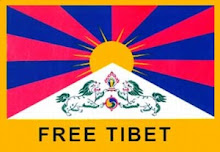

Nel corso della loro intensa carriera, gli Uyanga (poi divenuti Borte), di base in Germania ma formati da musicisti tutti diplomati al conservatorio di Ulaan Bataar, capitale della Mongolia, presentarono al pubblico europeo la musica mongola tradizionale e i suoi strumenti d’elezione, in gran parte sconosciuti in Occidente. Tra questi, il
morin khuur, uno strumento dal suono simile al violino con il collo a forma di testa di cavallo (
morin = cavallo) e corde e archetto fatti dei suoi crini. O il
tobschuur (un tipo di liuto) e lo
yatga (un’arpa ricurva con corde di budello). Ancor più sorprendente è la tecnica del canto gutturale tradizionale (il
khoomi), tramandata per secoli, che permette di produrre un’impressionante gamma di toni (anche più d’uno contemporaneamente). La musica mongola, basata su una scala pentatonica, evoca in maniera formidabile i paesaggi lunari della Mongolia. Se il genio di Morricone ha saputo rendere alla perfezione l’atmosfera del Far West, la musica degli Uyanga vi farà cavalcare a perdifiato tra le aspre montagne, le steppe desertiche e le sconfinate pianure di questo affascinante angolo di mondo del Far East. A voi le briglie!
R.
 Brief notes on Mongolian music:
Brief notes on Mongolian music:
The Mongolian songs have a rich repertory. Music spread from home to home on the occasion of festivities and by way of teaching. The family or the clan meeting constituted a good chance to gather and sing together, the chance to learn from others, and to take home a new melody. In this way, the ancient patterns performed in various corners of Mongolia have been preserved by local masters for the whole nation. Some specific types are: labor songs (work songs); buuvay songs (lullaby); hunter's calls [to attract animals by imitating their call); various herder's calls, [to manage the herds by means of signalling (each animal has its own signal)]; uukhay or gulyingoon songs which are linked to seasonal events (arrival of spring, mare milk flows, horse race training, etc.); many other songs announcing birthdays, weddings, national holidays, winning a horse race or a wrestling competition, celebration of the elders, wool cutting, cashmere combing, arrival of harvest and many more songs for singing and dancing together. The nomad shepherds in Mongolia, like other nomads from Central Asia, used to play string and wind instruments. The national music of Mongolia has had a rich background and a great tradition that goes back many centuries. Ensembles (orchesters) have performed at court or in the monasteries for lamaistic celebrations or in ritual ceremonies. Ensembles also play for daily rites in the ger (round tents). The morin khuur (horse-head violin or 'fiddle') (morin = horse; khuur = sound, rhyme, melody) is the most important traditional instrument for dance and to accompany songs. It is the national instrument. […] The body and the neck are carved from wood. The end of the neck has the form of a horse-head and the sound is similar to that of a violin or a cello. The [two] strings are made of dried deer or mountain sheep sinews. It is played with a bow made of willow, stringed with horsetail hair and coated with larch or cedar wood resin. […] The yatga is a half-tube zither with a movable bridge. It is constructed as a box with a convex surface and an end bent towards the ground. The strings are plucked and the sound is very smooth. The instrument was considered to be sacrosanct and playing it was a rite, bound to taboos. The instrument was mainly used at court and in monasteries, since strings symbolised the twelve levels of the palace hierarchy. (Face-Music; click for more infos)
Link in comments

 Nel corso della loro intensa carriera, gli Uyanga (poi divenuti Borte), di base in Germania ma formati da musicisti tutti diplomati al conservatorio di Ulaan Bataar, capitale della Mongolia, presentarono al pubblico europeo la musica mongola tradizionale e i suoi strumenti d’elezione, in gran parte sconosciuti in Occidente. Tra questi, il morin khuur, uno strumento dal suono simile al violino con il collo a forma di testa di cavallo (morin = cavallo) e corde e archetto fatti dei suoi crini. O il tobschuur (un tipo di liuto) e lo yatga (un’arpa ricurva con corde di budello). Ancor più sorprendente è la tecnica del canto gutturale tradizionale (il khoomi), tramandata per secoli, che permette di produrre un’impressionante gamma di toni (anche più d’uno contemporaneamente). La musica mongola, basata su una scala pentatonica, evoca in maniera formidabile i paesaggi lunari della Mongolia. Se il genio di Morricone ha saputo rendere alla perfezione l’atmosfera del Far West, la musica degli Uyanga vi farà cavalcare a perdifiato tra le aspre montagne, le steppe desertiche e le sconfinate pianure di questo affascinante angolo di mondo del Far East. A voi le briglie! R.
Nel corso della loro intensa carriera, gli Uyanga (poi divenuti Borte), di base in Germania ma formati da musicisti tutti diplomati al conservatorio di Ulaan Bataar, capitale della Mongolia, presentarono al pubblico europeo la musica mongola tradizionale e i suoi strumenti d’elezione, in gran parte sconosciuti in Occidente. Tra questi, il morin khuur, uno strumento dal suono simile al violino con il collo a forma di testa di cavallo (morin = cavallo) e corde e archetto fatti dei suoi crini. O il tobschuur (un tipo di liuto) e lo yatga (un’arpa ricurva con corde di budello). Ancor più sorprendente è la tecnica del canto gutturale tradizionale (il khoomi), tramandata per secoli, che permette di produrre un’impressionante gamma di toni (anche più d’uno contemporaneamente). La musica mongola, basata su una scala pentatonica, evoca in maniera formidabile i paesaggi lunari della Mongolia. Se il genio di Morricone ha saputo rendere alla perfezione l’atmosfera del Far West, la musica degli Uyanga vi farà cavalcare a perdifiato tra le aspre montagne, le steppe desertiche e le sconfinate pianure di questo affascinante angolo di mondo del Far East. A voi le briglie! R. Brief notes on Mongolian music:
Brief notes on Mongolian music:










11 comments:
http://www.megaupload.com/?d=1R4G2640
Musica fantastica! Ho sentito i Borte in concerto alcuni anni fa e non so perchè ma questa musica sentita dal vivo mi fa venire la pelle d'oca!!! Grazie! Marco.
Condivido:) Riascoltando il disco mentre ne scrivevo la recensione ho provato la stessa sensazione...
Se x caso tu avessi un disco dei Borte, o altri dischi affini, sarei ben lieto di presentarlo qui x promuovere questa musica meravigliosa.
Ciao e buon ascolto,
Radu
hello radu,
nice central asian albums can also be found here >>http://tuvarock.nnm.ru/
You need to register to see the links
Tantissime grazie!
Ecco un altro link:
http://rapidshare.com/files/39710871/Uyan98.rar
I just found this one by sheer accident... Thanks a lot for sharing it!
Oisín
Hello Radu! I like your blog very much!Do you know beautiful Mongolian singer Urna Chahar-Tugchi? If you don't I will happy to upload her album for you.
Hi, Dasha,
no, I don't know her. But I'm always very curious to hear the artists suggested by my readers.
http://sharebee.com/56f2f907
Unfortunately, here is only 128 Kb/s. But if Urna will interesting for you, i hope it will possible to find something better.
Nice record, Dasha. If you find a better sounding version, I'll post it in the blog. Thx again.
Hello. I tried to post this once before, and it isn't showing up. But if it appears twice, I apologise.
I was wondering if someone could post a translation of the titles of the songs on the Uyanga CD into English. I'm curious as to what the titles mean, and also, I do a radio program of world music here in the USA, and when I share this album with my listeners, I would like to give them an idea of what the titles of the songs mean. Thanks to anyone who can help me out here.
Post a Comment